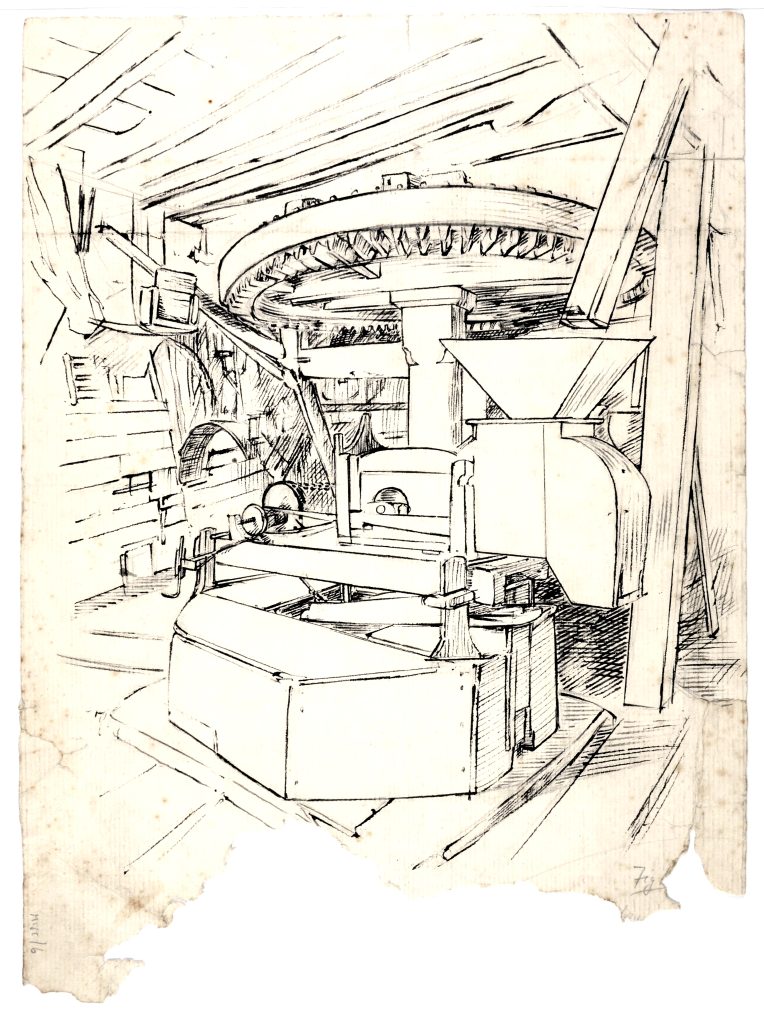
This sketch, showing the machinery in an unnamed mill, is one of a number drawn by artist Thomas Hennell and rescued as part of the Rex Wailes collection, now preserved by the Mills Archive.
The life of Thomas Hennell
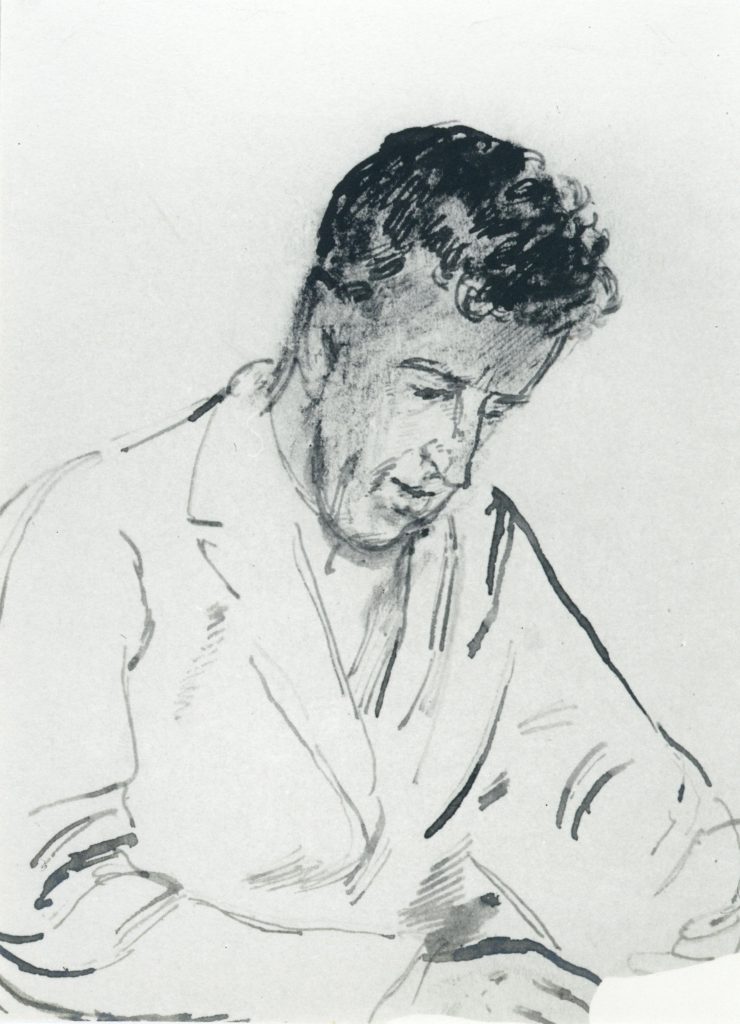
Thomas Hennell was born in 1903 at Ridley in Kent, the son of a vicar. His happy childhood in idyllic countryside surroundings gave him a deep love of rural England and its historic crafts. He studied drawing and painting and sought to capture the traditions of farming and country life in his art, publishing his first book of illustrations, Change on the farm, in 1934.
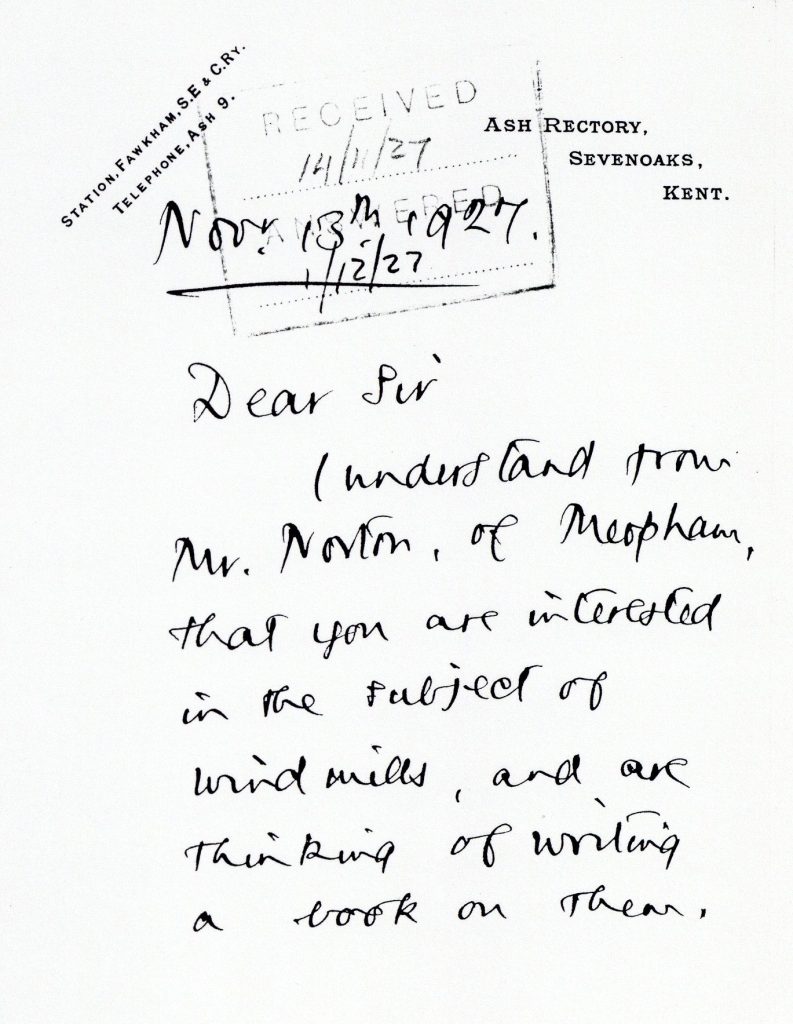
Hennell first made contact with Rex Wailes in 1927, writing I understand that you are interested in the subject of windmills, and are thinking of writing a book on them, and offering his services to provide illustrations. The Rex Wailes collection includes a small sketchbook given to Rex by Hennell in 1927, perhaps soon after they first met, containing rough notes and sketches on various mills.
This was the beginning of a long friendship and correspondence, interrupted only by Hennell’s period of mental illness and time in a psychiatric hospital in the early thirties. Hennell later wrote about the bizarre and surreal hallucinations and delusions he experienced during this time in his book The Witnesses.
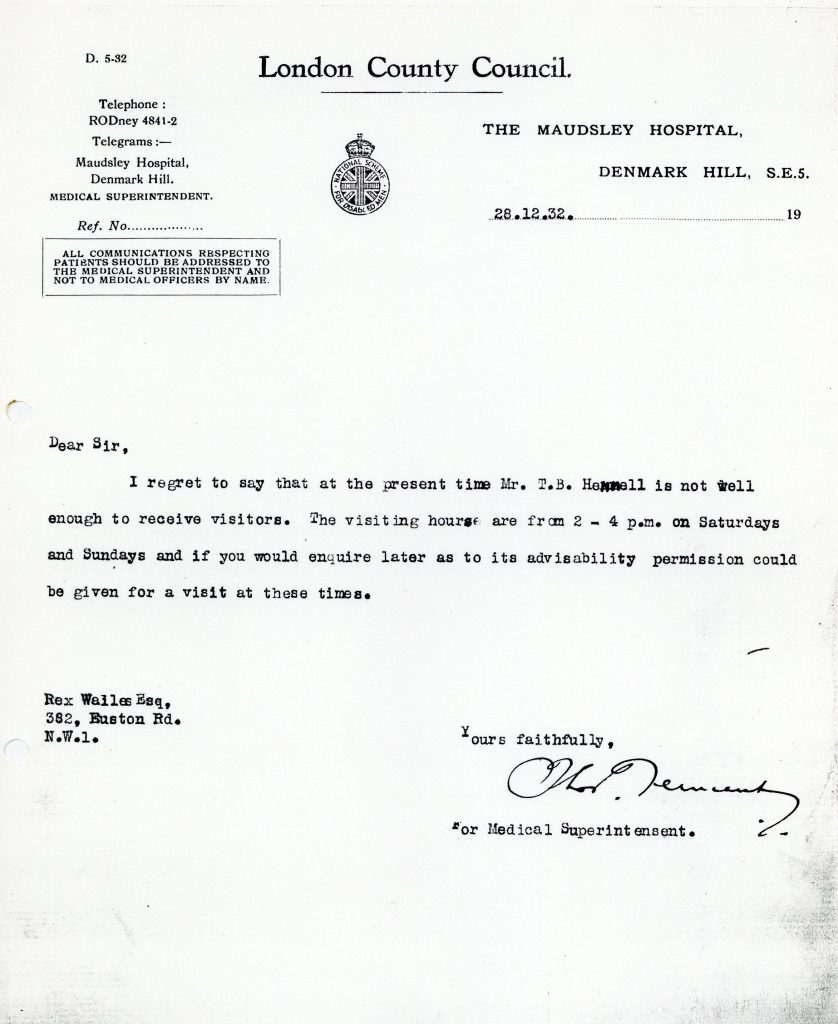
The planned book with text by Wailes and illustrations by Hennell sadly never saw the light of day. Commissioned as a war artist, Hennell was sent to work in Iceland, and after D-Day to depict the invasion of Europe. In 1945 he was sent to the Far East, visiting Burma, India, Sri Lanka and Singapore. With the surrender of Japan the war was now over, but Hennell went on to Indonesia, arriving in Surabaya, Java, in October 1945. Here a conflict was brewing between the Dutch colonists of what had been the Dutch East Indies and Indonesian nationalists. It seems the nationalist fighters surrounded the house where Hennell was staying and took him captive. He was never heard of again.
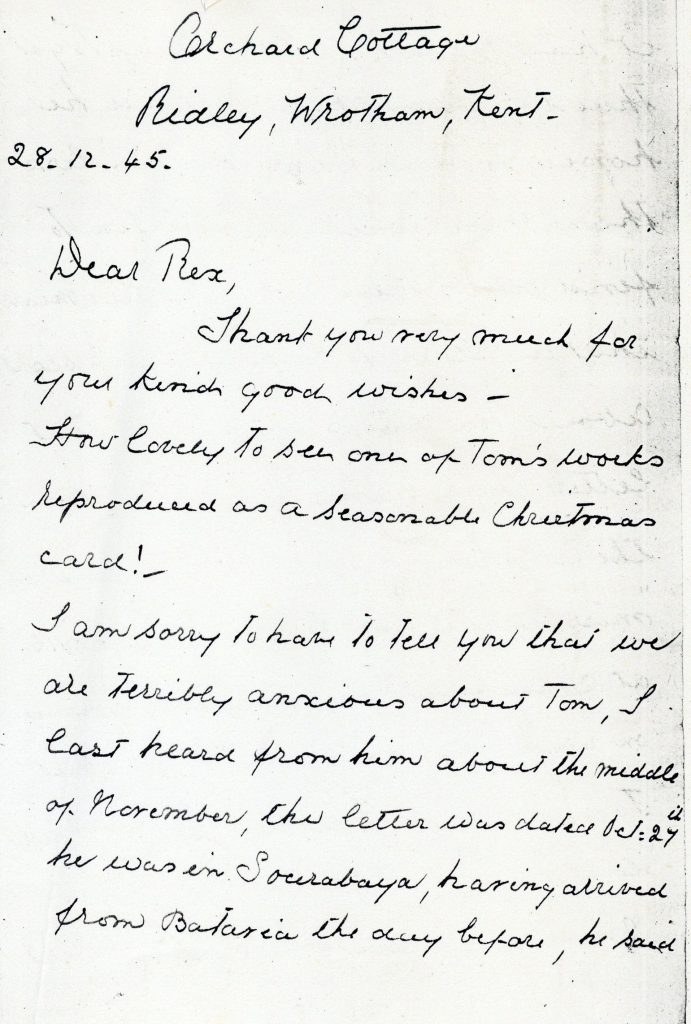
Conservation of the sketches
The sketch shown above was part of a mass of material left by Rex Wailes in the sheds at the bottom of his garden. Unsurprisingly storage in these conditions for many years did not leave the material in a good state – when Alan Stoyel took it upon himself to rescue the collection he reported that “much of the material was damp, quite a lot was actually sopping wet and full of mould and small animal life, and some had been attacked by mice”.
Alan spent many hours drying and cleaning the material, and then sent part of it to the Science Museum. Eventually in 2019 the whole collection was reunited at the Mills Archive.
Thanks to a grant from the National Manuscripts Conservation Trust, we were able to give 100 drawings to a professional conservator, Victoria Stevens, who took them away to conserve.
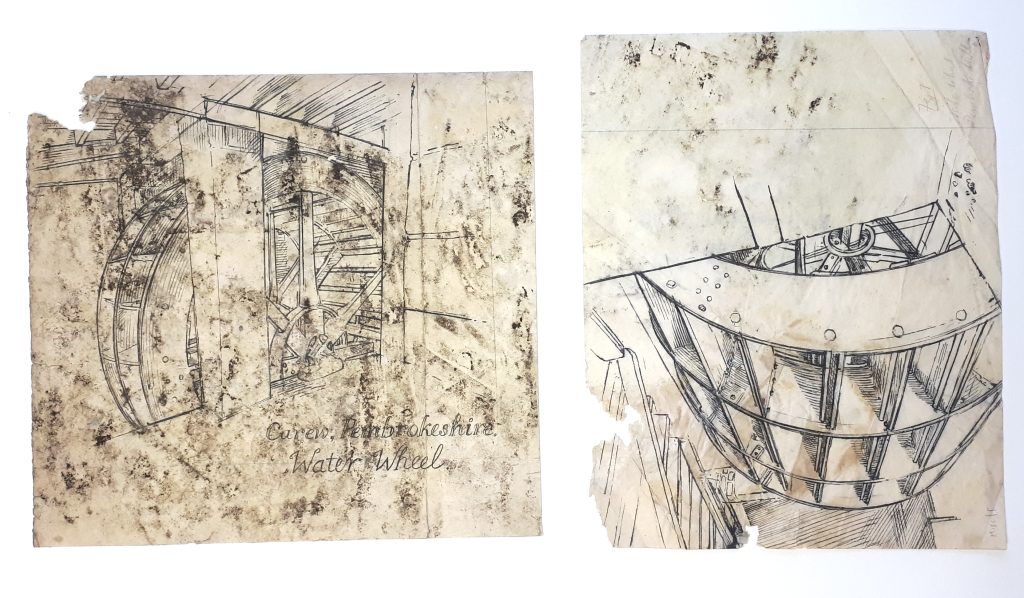
Here you can see two drawings by Thomas Hennell, in their initial state before conservation. There is a lot of water damage leading to discolouration of the paper, and they are covered in black mould. The edges of the drawings are also torn and fraying.
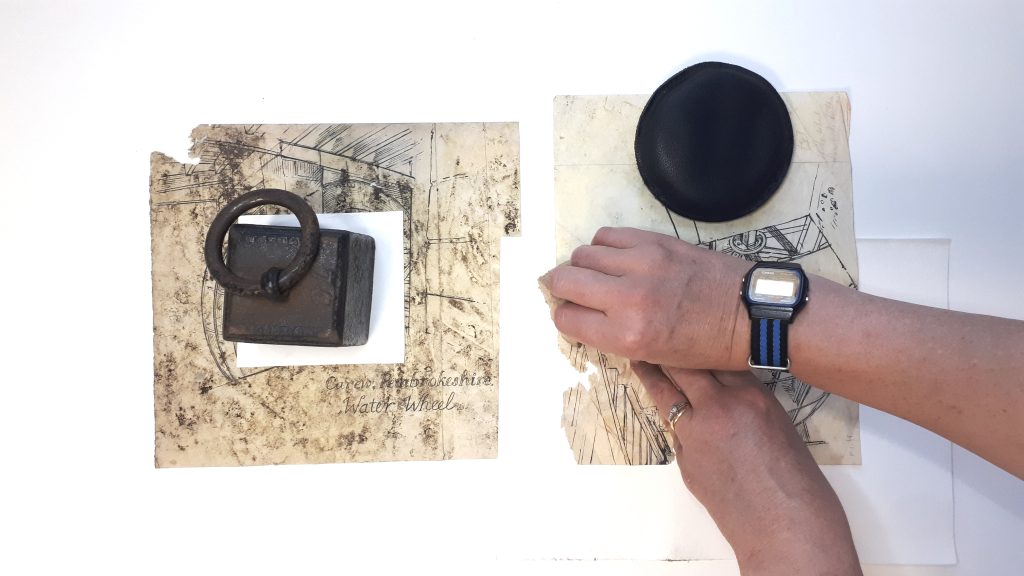
The first stage in the conservation process is cleaning the surface dirt. Victoria also came to the Archive shortly before the 2020 lockdown to give us all a training session in how to clean documents. It can be done with something as complex as a special vacuum cleaner, or as simple as an eraser.
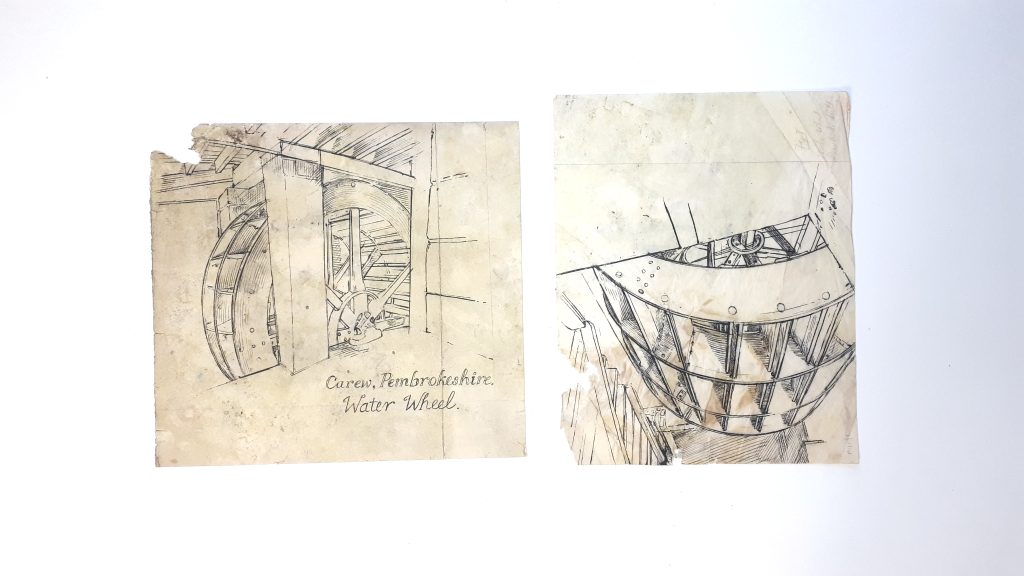
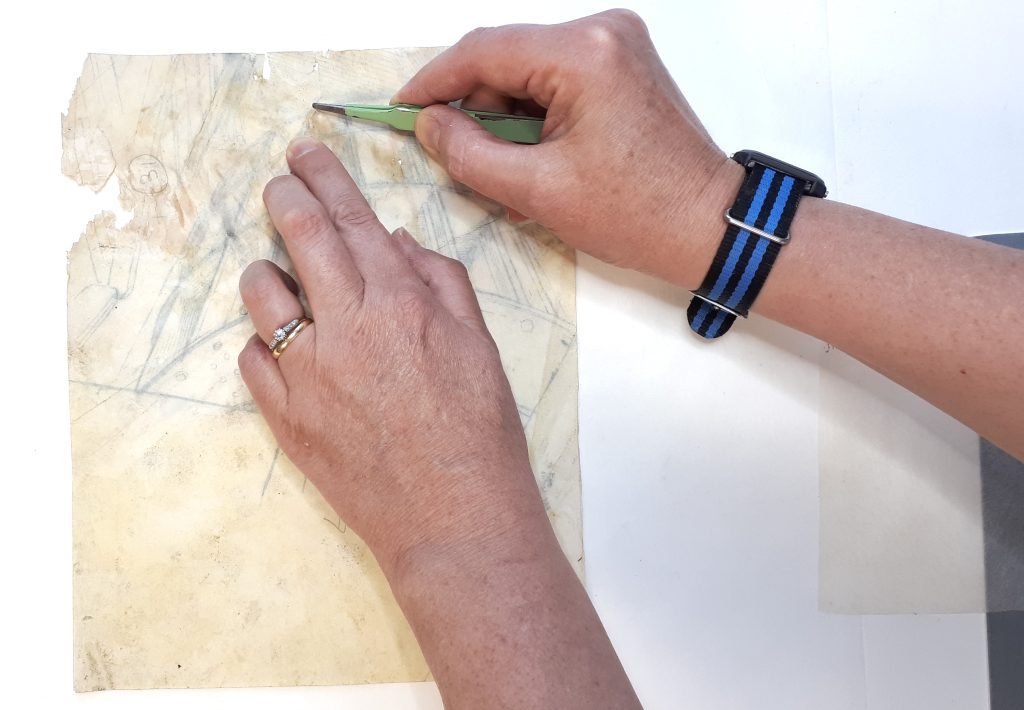
Following this, Victoria made repairs to the paper itself. This was done using a very pure quality, thin and strong Japanese paper made from long fibred mulberry pulp. This is glued on to weak points in the drawing using wheat starch – which is strangely fitting, using a by-product of flour milling to repair mill drawings! The additional paper is added wherever there are tears or holes in the original. Finally the drawings are stored in polyester pockets.

